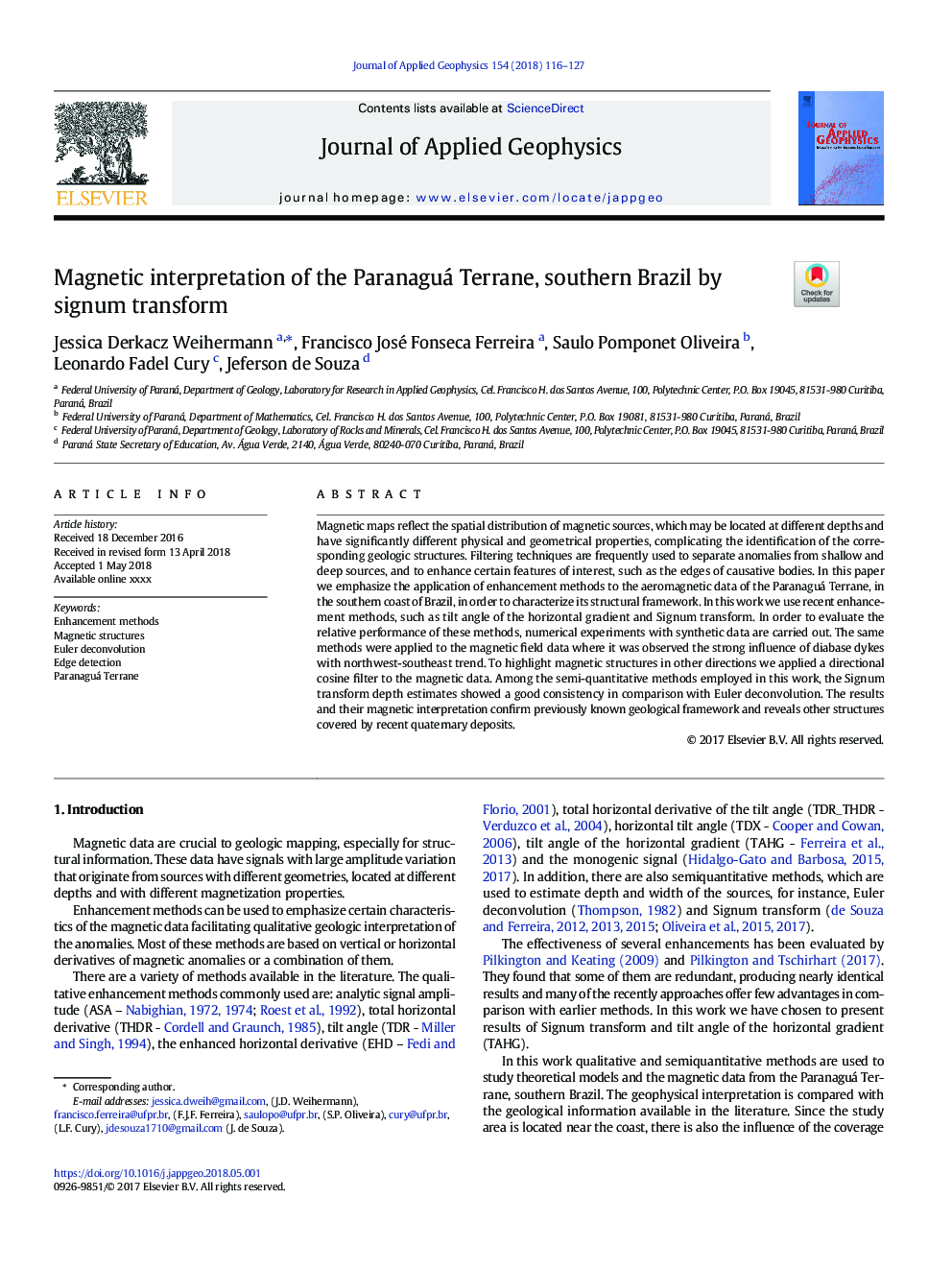| Article ID | Journal | Published Year | Pages | File Type |
|---|---|---|---|---|
| 8915367 | Journal of Applied Geophysics | 2018 | 12 Pages |
Abstract
Magnetic maps reflect the spatial distribution of magnetic sources, which may be located at different depths and have significantly different physical and geometrical properties, complicating the identification of the corresponding geologic structures. Filtering techniques are frequently used to separate anomalies from shallow and deep sources, and to enhance certain features of interest, such as the edges of causative bodies. In this paper we emphasize the application of enhancement methods to the aeromagnetic data of the Paranaguá Terrane, in the southern coast of Brazil, in order to characterize its structural framework. In this work we use recent enhancement methods, such as tilt angle of the horizontal gradient and Signum transform. In order to evaluate the relative performance of these methods, numerical experiments with synthetic data are carried out. The same methods were applied to the magnetic field data where it was observed the strong influence of diabase dykes with northwest-southeast trend. To highlight magnetic structures in other directions we applied a directional cosine filter to the magnetic data. Among the semi-quantitative methods employed in this work, the Signum transform depth estimates showed a good consistency in comparison with Euler deconvolution. The results and their magnetic interpretation confirm previously known geological framework and reveals other structures covered by recent quaternary deposits.
Related Topics
Physical Sciences and Engineering
Earth and Planetary Sciences
Geophysics
Authors
Jessica Derkacz Weihermann, Francisco José Fonseca Ferreira, Saulo Pomponet Oliveira, Leonardo Fadel Cury, Jeferson de Souza,
